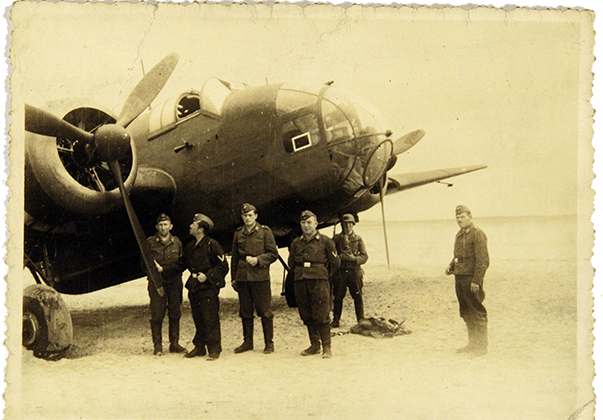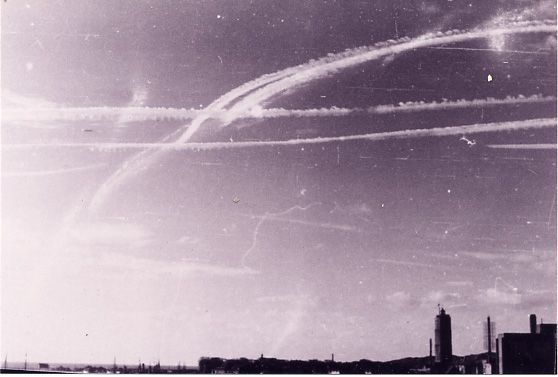Shot-down aircraft
The number of bombings on German cities by the Allied Forces increased during the war. Allied aircraft came in from the North Sea to bomb northern German cities, such as Emden, Wilhelmshaven, Bremen, Hamburg and Berlin.
Initially, the British aeroplanes flew to Germany alone or in small formations. They chose flight paths with the least amount of anti-aircraft artillery (Flak). Some planes used the Afsluitdijk as an orientation point to the east while others flew over the IJsselmeer to avoid the Flak batteries in the coastal area. Still, a large portion of the planes ended up in the Wadden area. This was often the case for planes returning home after being damaged and looking for the shortest route to England. These planes often fell victim to the German night fighters taking off from the airport in Leeuwarden. The Tigerstelling on Terschelling guided these night fighters to their targets from the analysis centre in the enormous bunker called ‘Bertha’, the heart of the Tigerstelling.
But the allied formations were also attacked above the North Sea on their way to Germany. 104 allied aircraft were shot down above the North Sea, only a few kilometres from Vlieland, Terschelling and Ameland. 47 planes crashed above the Wadden Sea, 12 of them on Terschelling.
Texel
Numerous planes were also taken down on and around the island of Texel. The fighter planes from the airport in Leeuwarden and De Kooy near Den Helder were responsible, together with the anti-aircraft artillery on Texel. 19 planes crashed on the island. Stones commemorate these crashed aircraft in various places on Texel. Attacks by German fighter planes caused another 29 planes to disappear in the North Sea and the Wadden Sea.
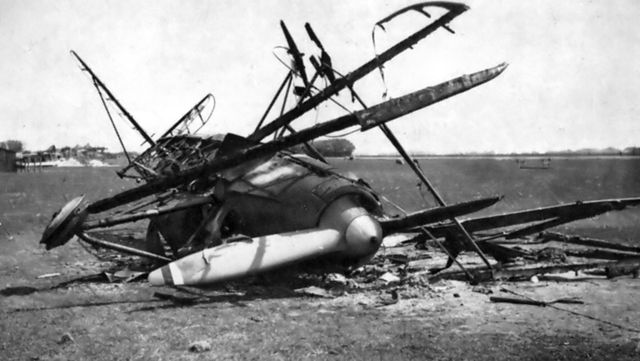
The island was bombed by allied aeroplanes 215 times (source: Hans Nauta, Bommen op Texel, Bulletin SGLO 318). The island had an airport and several Flak batteries. This airport was often targeted by allied bombers and fighters, but most bombs were dropped by planes that prematurely aborted their mission to bomb German cities. To ensure that the flight would be registered as operational, they would empty the bomb bay above Texel, without having a specific target.
Although the crew, or at least some of them, did sometimes manage to eject from the plane in time, the entire crew most often perished in a crash. The bodies would then wash ashore on the islands or be pulled out of the wreckage. They were often horribly disfigured, making identification impossible. So, they would be buried in a mass grave and would not be identified until after the war.
167 soldiers who died during the war are buried in Texel's public cemetery. Most of them died when their plane crashed on the island but some washed ashore. 44 of the fallen have never been identified.
Schiermonnikoog
'Vredenhof' cemetery on Schiermonnikoog is the final resting place of 118 drowning victims who washed ashore on the island between 1906 and 1968; 70 of them are WWII victims. Just as on the other Wadden islands, the first drowned bodies were victims of the Battle of Dunkirk, when English and French army units escaped the German encirclement between 27 May and 4 June 1940. Many drowning victims who did not survive the crossing to England were washed ashore on the coast of the Wadden islands by the currents.
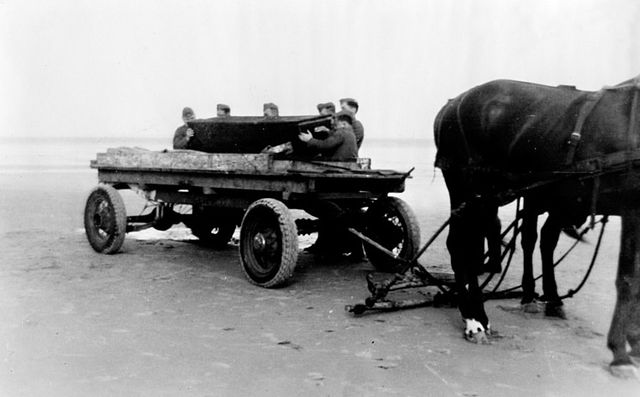
Ameland
By the end of the war, 136 fallen allied and German soldiers were buried in four different cemeteries on Ameland; 52 of them were allied crew members who died in aeroplane crashes and the others washed ashore after a shipwreck. After the war, the remains of the American military men were transferred to the Netherlands American Cemetery and Memorial in Margraten in Limburg. The French and Moroccan soldiers were transferred to a French cemetery near Kapelle in Zeeland.
Terschelling
84 allied soldiers, mainly from Great Britain and the Commonwealth, are buried in the public cemetery on West Terschelling and, by the end of the war, this number had risen to 151. After the war, the American soldiers were reburied in Margraten and the French soldiers in Kapelle.
Noarderleech
Five allied and six German planes crashed in the marsh area of Noarderleech, in the municipality of Noordeast-Fryslân, during the war. Most of the allied and German crew members did not survive. There are 3 war graves in the public cemetery in Hallum. Some bodies washed ashore elsewhere, such as Harlingen, where they are also buried in the public cemetery. The bodies of crew members shot down somewhere else above the Wadden area washed ashore regularly during the war.
Sometimes the crew were able to eject from the aircraft in time, such as with the Short Stirling, a bomber carrying firebombs, that was on its way to Emden. It was shot by a Messerschmitt above Schiermonnikoog on 7 June 1942 and crashed in a field near Blije. The 8 crew members were able to escape with parachutes but were captured as soon as they hit the ground.
Some fallen crew members were never found. Their bodies disappeared in the seabed of the Wadden, such as that of German pilot G. Wilhelm, who plummeted to his death in the marsh area after a failed nose dive with his Messerschmitt Bf109 on 16 July 1943. In this area, the German aeroplanes practised dropping dummy bombs on wooden ships and did target practice with their machine guns. The exact spot where the plane and its pilot disappeared into the earth was marked by a commemorative fence for many years, and the story can now be read on an info panel at the German observation post which is still there.
-
Communication and equipment
Communication and equipment
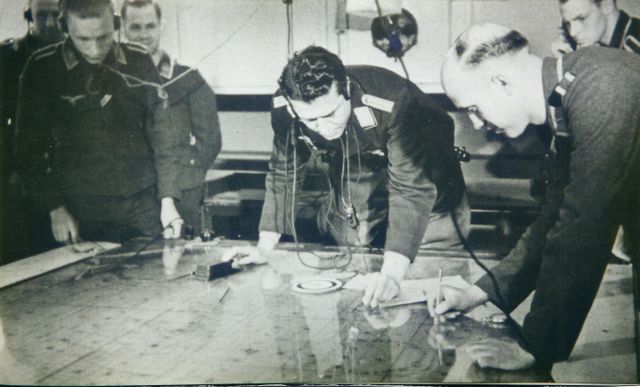
-
War in the air
War in the air
